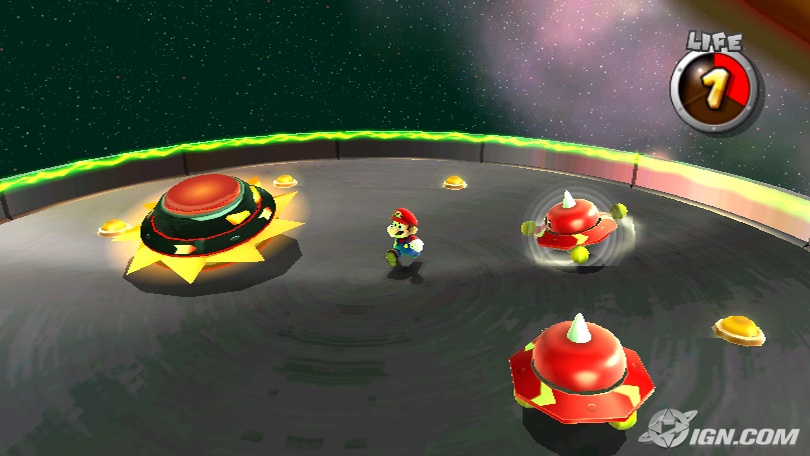Super Mario Galaxy: A Visual Tour
Tuesday, November 13th, 2007I picked up Mario Galaxy last night and have been enjoying it, both as a game, and also picking it apart technically. The level design really stands out in how it consistently surprises you with creative platforming gameplay.
But what’s more interesting is how Nintendo is using the modest Wii hardware to achieve its graphical effects.
I could never quite tell from the YouTube previews, but it appears Mario’s using something like stencil shadow volumes to handle all its shadows– which are always projected in gravity’s direction. Unfortunately this technique means unsmoothed edges and a uniform brightness for all shaded areas. Side effects include moving platforms whose shadows suddenly blink onto surfaces when they approach, and suddenly disappear as they pass.
An element that Galaxy uses all over the place to great effect is something like a fake rim lighting shader. From what I understand, the Wii isn’t fragment shader capable, so maybe they’re faking it by setting an independent directional light aimed reverse relative to camera for each rimlit object? I’ve read a few things about the Wii’s Register Combiners and TEVs, and I wonder if they’re using them for pixel shadery purposes.
It’s all that lighting around the silhouettes of objects that helps give the characters and environments that signature plastic pop.
The fur shading is fairly nice as well, and I wonder how they’re doing it on the Wii hardware, whether it’s an actual shader, or they’re doing tricks rendering a multilayered shell of increasingly translucent polygons like in Shadow of the Colossus
Anyway, I am really enjoying the game so far, and the art direction is top notch. It’s also great to play Mario along to a live orchestral score — too bad Nintendo didn’t make the switch in time for Twilight Princess.
The shadows are the only real graphical let-down. It seems like they could be doing something more clever with the alleged crazy fill-rate on the Wii. Blurred textured shadow maps for near geometry or something? Also, multisampling would be nice, but playing on a standard def tv is forgiving.
I’d love to hear other people’s insights into the graphics behind the game. The rim lighting shading is something that could be easily applied to indie games looking for some eye candy punch…



